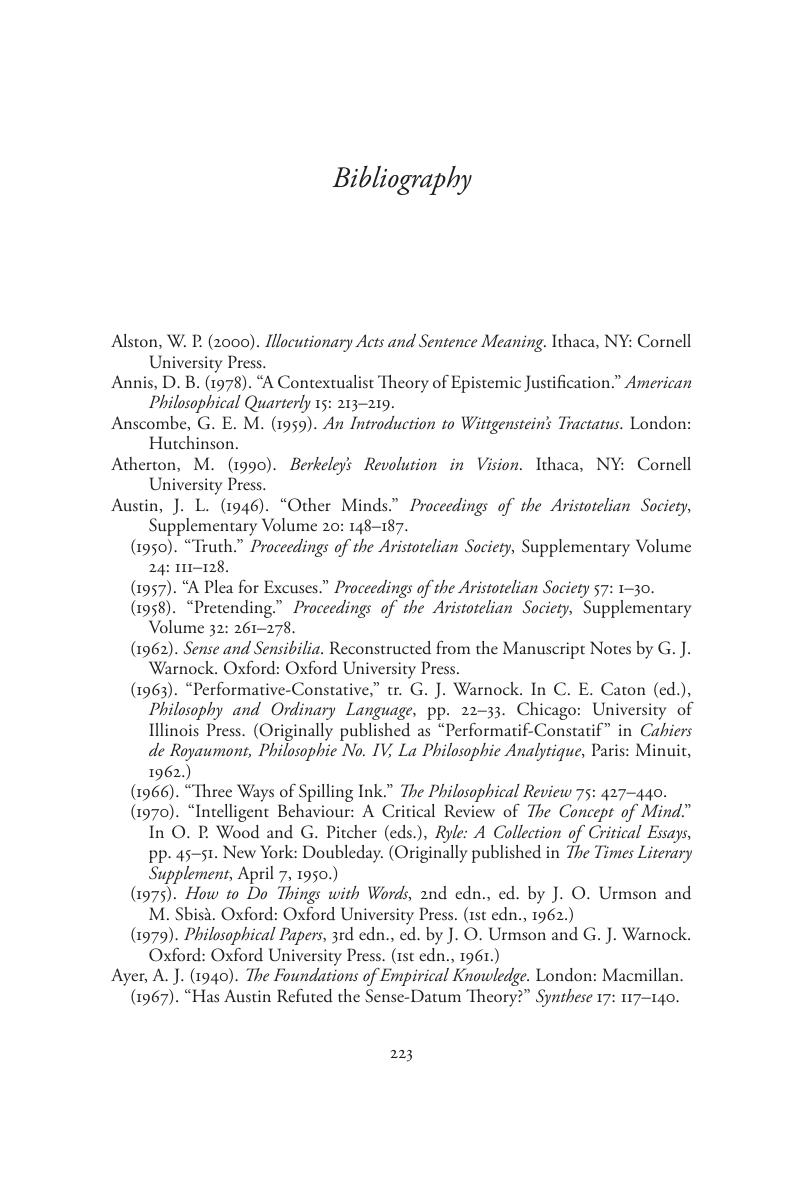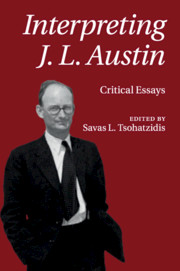Book contents
- Interpreting J. L. Austin
- Interpreting J. L. Austin
- Copyright page
- Dedication
- Contents
- Contributors
- Acknowledgments
- Introduction
- Chapter 1 Exploring Austin’s Galaxy
- Chapter 2 Levels of Linguistic Acts and the Semantics of Saying and Quoting
- Chapter 3 On the Representation of Form and Function
- Chapter 4 Uptake in Action
- Chapter 5 Performativity and the “True/False Fetish”
- Chapter 6 The Vulnerability of Reality
- Chapter 7 Berkeley and Austin on the Argument from Illusion
- Chapter 8 Austin on Perception, Knowledge, and Meaning
- Chapter 9 Enough is Enough
- Chapter 10 Knowledge and Knowledge-Claims
- Bibliography
- Index
- References
Bibliography
Published online by Cambridge University Press: 04 November 2017
- Interpreting J. L. Austin
- Interpreting J. L. Austin
- Copyright page
- Dedication
- Contents
- Contributors
- Acknowledgments
- Introduction
- Chapter 1 Exploring Austin’s Galaxy
- Chapter 2 Levels of Linguistic Acts and the Semantics of Saying and Quoting
- Chapter 3 On the Representation of Form and Function
- Chapter 4 Uptake in Action
- Chapter 5 Performativity and the “True/False Fetish”
- Chapter 6 The Vulnerability of Reality
- Chapter 7 Berkeley and Austin on the Argument from Illusion
- Chapter 8 Austin on Perception, Knowledge, and Meaning
- Chapter 9 Enough is Enough
- Chapter 10 Knowledge and Knowledge-Claims
- Bibliography
- Index
- References
Summary

- Type
- Chapter
- Information
- Interpreting J. L. AustinCritical Essays, pp. 223 - 234Publisher: Cambridge University PressPrint publication year: 2017



